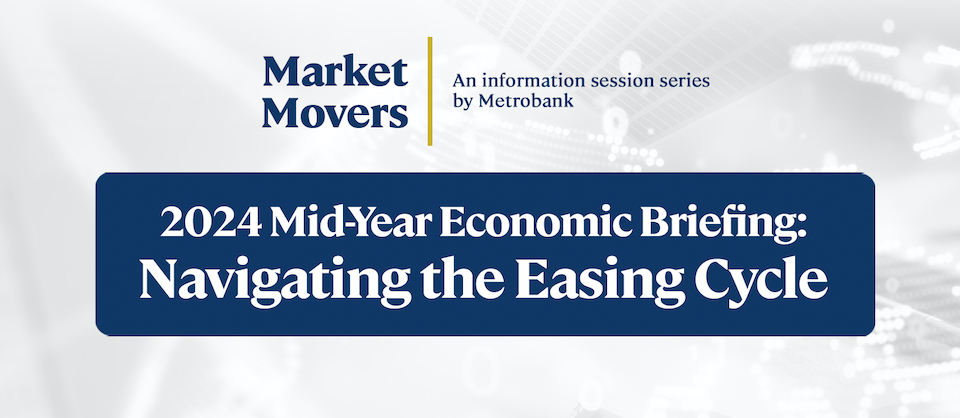Fed Preview: String of rate cuts still brewing
Fed holds rates steady at 4.25%-4.5% in May 2025, balancing inflation and growth risks amid trade uncertainties, with rate moves data-dependent. Read more here.

The US Federal Reserve (Fed) is expected to deploy more rate cuts this year, although Metrobank believes it won’t come in the upcoming meeting.
Inflation fears yet to materialize
Despite looming tariffs under US President Donald Trump, inflation in the world’s biggest economy has yet to spike, with some downside price pressure emerging.
Global oil prices have declined since the beginning of the month amid concerns about oversupply, while weak global demand is now all but expected due to the trade war. We do, however, still recognize price pressure could flare up if higher tariffs feed directly to consumer goods should trade talks fall through.
- Headline Consumer Price Index (CPI) surprised on the downside with a 0.1% month-on-month (MoM) decrease in March, with energy prices pushing down the headline print.
- Growth in core CPI, which excludes volatile food and energy, eased to 0.1% MoM.
- Financial markets are expecting Personal Consumption Expenditure (PCE) and Core PCE to be tamed in March. Bloomberg consensus estimates for PCE and Core PCE are at 0.0% and 0.1% MoM increase.
Although inflation shows signs of easing for now, Fed officials including Chair Jerome Powell remain cautious, emphasizing the need to ensure that tariffs don’t trigger more persistent inflation.
Labor market’s resilience
Announcements of job layoffs have spiked over the past two months, attributed to actions of the Department of Government Efficiency (DOGE). Despite this, we’ve yet to see these manifest in monthly payroll numbers, which so far have yet to confirm weakness in the labor market.
US Challenger Job Cuts Announcements were recorded at 275,240 in March, a 60% increase from the preceding month. Some 79% of these are brought by the DOGE.
Meanwhile, the latest non-farm payrolls (NFPs) remained resilient with a 228,000 month-on-month (MoM) increase, surprising market players with a consensus estimate of 140,000 additional NFPs.
The unemployment rate, on the other hand, moved slightly higher to 4.2% in March from 4.1% in the preceding month.
Fed cuts amid outlook of a shallow recession
Newly imposed tariffs, especially the 145% tariff on products coming from China will likely result in higher costs of US consumer goods. The potential spike in prices could hurt consumption and lower business profit margins. As a result, both consumer and business confidence now show decreasing confidence.
Amid the trade war and the increased chances of a US recession, Fed officials appear increasingly vigilant on potential strains on the labor market. Concerns about the Fed’s full employment mandate reinforce the outlook that the Fed could decide to ease monetary policy in the near term, especially as inflation remains contained, for now.
Some Fed officials are signaling the possibility of lowering policy rates as early as June. A reduction at the next meeting is probably out of the picture, as Fed officials will need more confidence in the easing of inflation.
With this, Metrobank forecasts that the Fed will maintain the Federal Funds Rate at 4.25%-4.50% in the next meeting on May 6-7, 2025.
(Disclaimer: This is general investment information only and does not constitute an offer or guarantee, with all investment decisions made at your own risk. The bank takes no responsibility for any potential losses.)
MARIAN MONETTE FLORENDO is a Research Officer of the Research and Market Strategy Department, Institutional Investors Coverage Division, Financial Markets Sector, at Metrobank. Her academic background is in Mathematics and Economics. She loves solving puzzles and watching mystery movies.







 DOWNLOAD
DOWNLOAD




 By Marian Florendo
By Marian Florendo